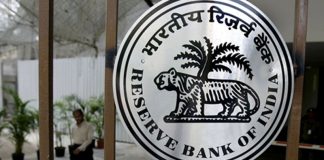Maharashtra is a state full of contradictions.
It is a state rife with more inequality than most.
And it is a state where each territory tries to exploit, and ends up feeling exploited.
The cries for water and the spurt in suicides in parched Marathwada are just some of the sharp manifestations of the rot that threatens to tear the state apart. Maharashtra has almost 20 percent of its population living on just two percent of its land area (around Mumbai, Pune and Nashik). The western regions generate much of the money for the state. Marathwada remains the biggest exploiter in the entire state. And Vidarbha ends up remaining the most exploited; a shriller Marathwada, seeking a greater share of drought relief meant for the state, can drown out its cries.
It is undeniable that Marathwada faces a crisis.
But it is a crisis of its own making, abetted by politicians and policymakers who have allowed this situation to develop. This region’s politicians have misused funds for irrigation, have run cooperative banks into losses (remember how the Rs 1,100-crore losses of the Maharashtra Cooperative Bank turned into profits in the very first year its board was dissolved by the RBI and a professional board appointed?). That Marathwada has been an exploiter all along cannot be denied. Only, this time, it claims to have become the exploited.

The cries for water and the spurt in suicides in parched Marathwada are just some of the sharp manifestations of the rot that threatens to tear the state apart. Image credit: Parth MN
Here’s a sample:
It is home to a few regions from where power charges are not even collected. This was the case till the government (under former chief minister Prithviraj Chavan) decided to categorise non-paying regions into categories A, B, C and all the way up to G. The lower the grading, the more the power cuts and load shedding in that region. Regions that paid their power bills were more likely to get uninterrupted power supply. This mechanism alone compelled some of Marathwada’s regions to become a bit more regular in paying their power bills. However, most power bills are compiled for these regions on the assumption that they are meant for agriculture and thus must be charged a presumptive tariff at the rate of just around Rs 1.20/kWh. What is frightening is that this exploitation of groundwater has continued even though water tables have dipped alarmingly in the state, threatening the health of agricultural soil.
The low (or non-existent) tariff has allowed this state to set up water pumps to draw out water from the ground recklessly. As a result, Marathwada is guilty of using more water than its share. As a result, more water soaks up farmlands, resulting in leeching and salinity of the soil degrading its soil quality even further. So, if the wells are dry today, it is because the state has allowed the sugar industry to use up the ground water recklessly.
![Water-requirement-through-rain-&-irrigation[2]](http://s1.firstpost.in/wp-content/uploads/2016/04/Water-requirement-through-rain-irrigation2.jpg)
The imprudent approach of the state government is evident in the manner in which Marathwada has been allowed to grow sugarcane. This crop accounts for just four percent of agricultural land, but soaks up over 70 percent of the water. What makes the situation grim and irresponsible (even criminal) is that 80 percent of the sugarcane crop is grown in regions that are known to be water-deficient.
Look at the exploitation of water in another way.
As pointed out by Amit Bhardwaj, deputy head, Indian Sugar Mills Association in his presentation in October 2013, Maharashtra (read Marathwada) guzzles the maximum water per kg of sugar than other states in India. So you have a water-guzzling crop for which the state uses more water than other water-rich states, grown in areas that are known to be water-deficient.
In spite of this, there has been no policy-level change regarding sugarcane cultivation, no attempt to control water usage through proper charges for water consumption, or fiscal measures to shift sugarcane cultivation to areas other than water scarce regions. Interestingly, most of the state’s sugar mills are concentrated in the drought-prone areas of Solapur, Pune and Ahmednagar, Aurangabad, Beed, Osmanabad, Parbhani and Latur.
Today, you have a piquant situation. The state is confronted with a Hobson’s choice. Sugar mills continue to get water, even though the general public remains water deprived. But the government dare not shut down the sugar mills, for fear that they will not pay the farmers for the cane. And the resultant unemployment from any planned closure of sugar mills, could mean more concentrated political headaches. So the government adopts the easiest route. Provide more drought relief to Marathwada, paid for by taxpayers, even while sugar barons make money on the water they use for producing sugar.











































COMMENTS